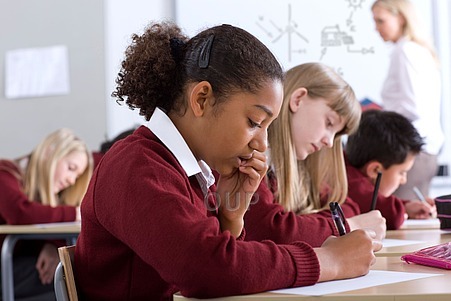
Have you ever thought about how complex writing is? It involves fine motor skills, hand-eye coordination, control of the arm and shoulder, recognition of letter shapes, association of letter shapes and sounds, and so on. It’s a wonder anyone ever learns to write. The fact that children usually master it is proof of their amazing learning power. The early stages of learning to write involve developing concepts about writing as well as the basic skills that form the foundation of writing development.
Children begin to understand and to enjoy the idea of writing well before they are actually able to write. They see adults and older children writing and, as always, want to join in. Their experiences as they do so can influence both their progress and their later attitude to writing, so how can we ensure that they’re positive ones?
Encourage scribbling early mark-making
Make sure that opportunities for writing are widespread and varied, and that you praise all children’s efforts. When you refer to what children are doing as writing and ask about what they’ve written, you reinforce the idea that they’re doing the same thing as the ‘grown-ups’. You are valuing their effort. The marks may just be scribbles at this stage, but they’re a crucial stage on the path to recognizable writing.
Some everyday opportunities for writing:
- writing labels for items in the classroom, e.g. toy food in a shop
- writing a label on a picture they’ve painted or drawn
- writing a message or a card for a family member
Be CREATIVE
Pencil control is a fundamental skill to master, but there are also many creative activities that will contribute to writing skills that don’t involve pencil and paper.
The following will all develop children’s motor skills, and parents may also like to do some of them at home:
- Manual craftwork, e.g. manipulating small pieces of paper to make a collage picture
- Making marks in sand with sticks or fingers
- Covering a chalkboard with chalk and painting it with a wet paintbrush
In addition, using modelling clay helps to develop the muscles in the hand – get children squeezing, squashing, and rolling balls and sausage shapes.
Focus on letter SHAPES
For children to develop from early mark-making to recognizable letters, they need to recognize the letter shapes. (They also, of course, need to associate letters with sounds before they can use letters meaningfully, but that’s another topic.) Flashcards and posters with the letters are really useful for this, but they can be supplemented and combined with lots of other activities. For example:
- Have children make the shapes with their bodies. Give two children a flashcard of letter ‘b’, for example, and ask them to work together to make the shape.
- Match magnetic letters to flashcards.
- Have children make the letters of their name with salt dough. They can decorate the letters when they’re baked.
- Letter hunt: give a child a letter flashcard and ask them to find as many examples of that letter around the classroom or on a page of a storybook.
- Use objects such as buttons or pipe cleaners to make the shape of a letter shown on the flashcard. Watch teacher trainer, Freia Layfield, show you how to make the most of this kind of activity in class and download a free photocopiable activity template.
Make writing part of role-play
Role-play is a key part of children’s play at this age, and it can provide great opportunities for meaningful writing activities. If you leave clipboards with pencils around the classroom in different play areas, children can be encouraged to build writing into their play.
Here are some ideas for combining role-play and writing:
- Shopping: write a shopping list
- Firefighters: write the address of the fire
- Doctors: write a prescription for some medicine or some notes about the patient’s condition
- Superheroes: write a secret message to another superhero and hide it for them to find
- Traffic cops: write parking tickets for scooters left in the wrong place – or even speeding tickets!
And finally, be patient
Different children progress at different rates. A child may, for example, have less developed fine motor skills but a good understanding of sound–letter correspondence. Try not to ‘correct’ children’s writing too much and remember to praise their efforts; they will be encouraged to write more and so get the practice they need to progress.
Would you like more practical tips on getting kindergarten children to read and write? Visit our site on Teaching 21st Century skills with confidence for free video tips, activity ideas and teaching tools.
Sign up for the free webinar on how to get kindergarten children writing on 22 January 2014.